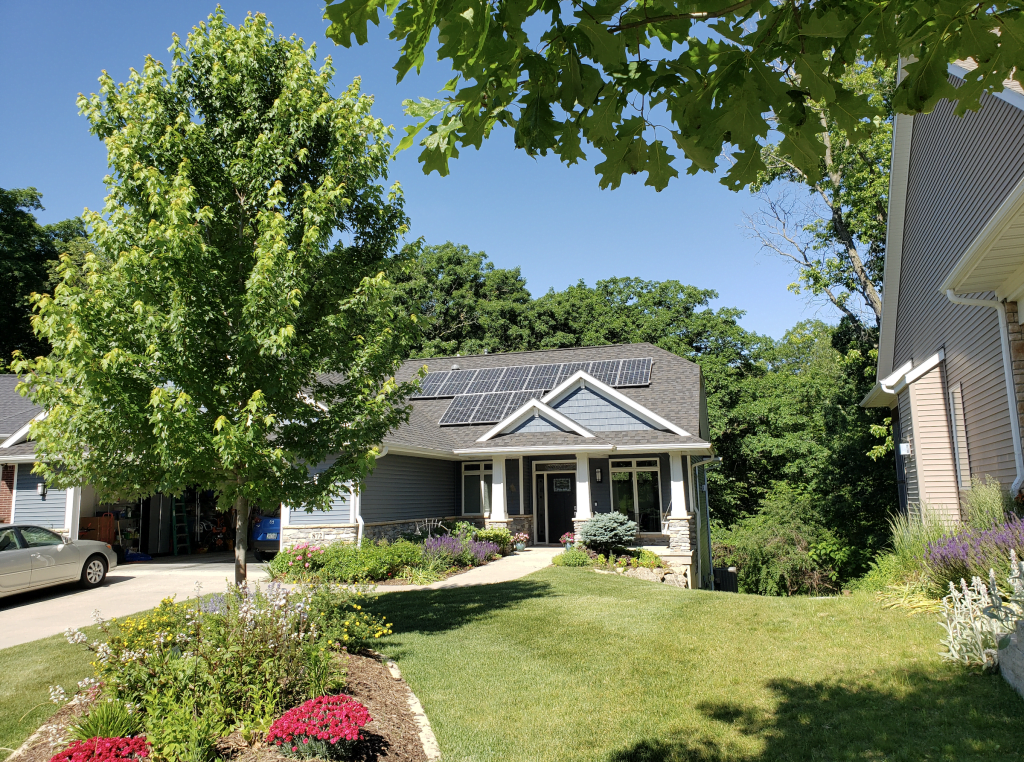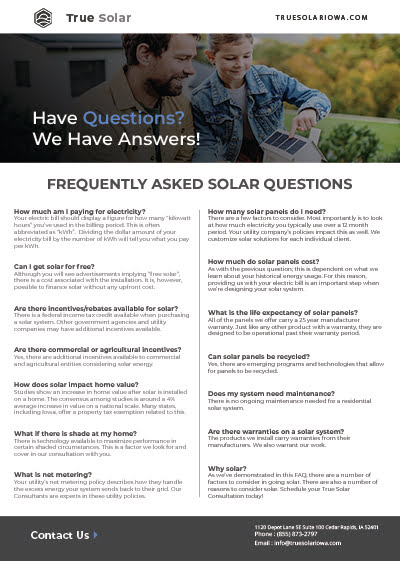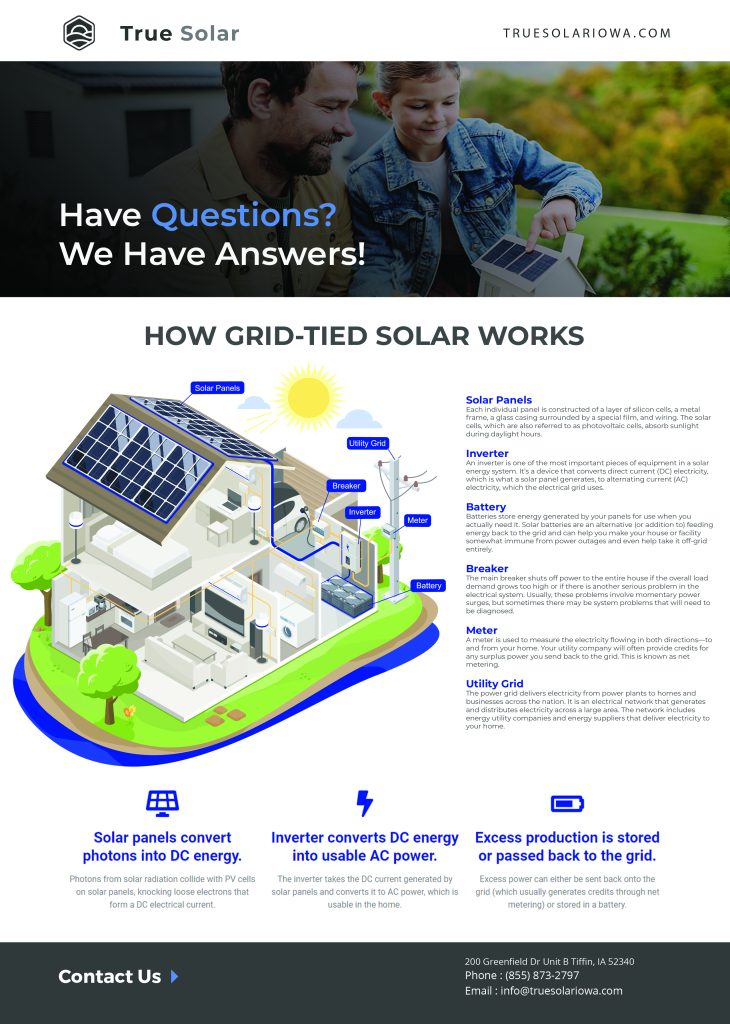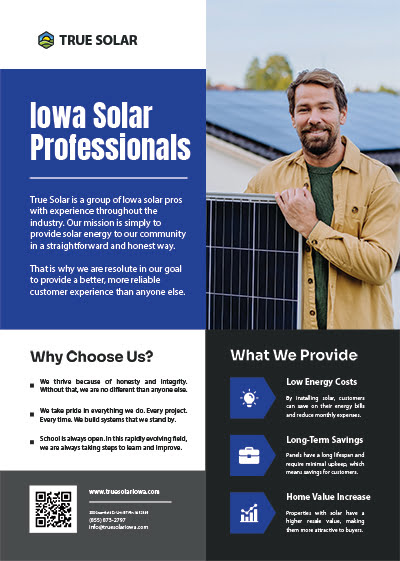How Solar Works
Solar panels convert photons into DC energy.
Photons from solar radiation collide with PV cells on solar panels, knocking loose electrons that form a DC electrical current.
Inverter converts DC energy into usable AC power.
The inverter takes the DC current generated by solar panels and converts it to AC power, which is usable in the home.
Excess production is stored or passed back to the grid.
Excess power can either be sent back onto the grid (which usually generates credits through net metering) or stored in a battery.
Parts of a Home Solar Energy System
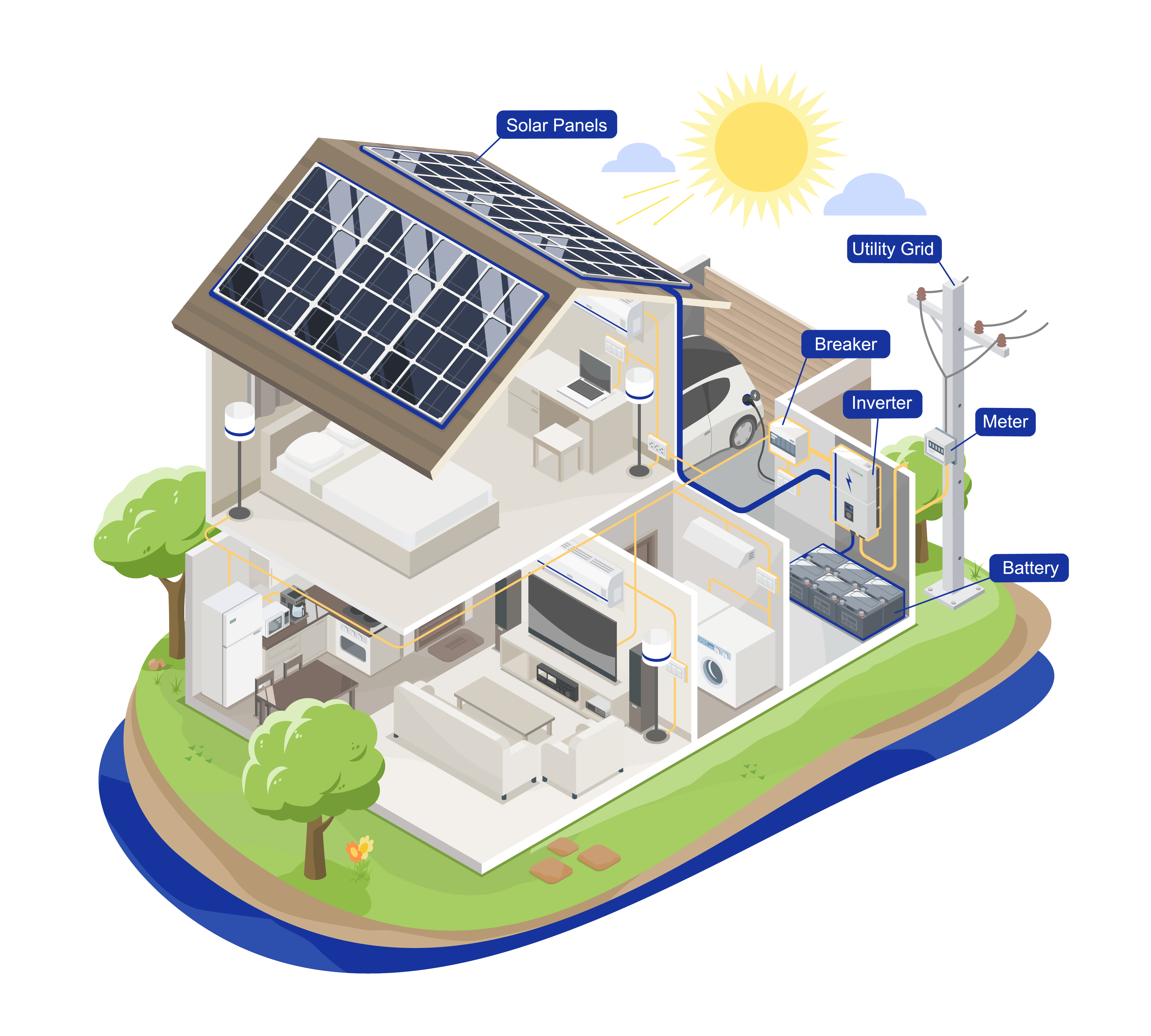
Solar Panels
Each individual panel is constructed of a layer of silicon cells, a metal frame, a glass casing surrounded by a special film, and wiring. The solar cells, which are also referred to as photovoltaic cells, absorb sunlight during daylight hours.
Inverter
An inverter is one of the most important pieces of equipment in a solar energy system. It’s a device that converts direct current (DC) electricity, which is what a solar panel generates, to alternating current (AC) electricity, which the electrical grid uses.
Battery
Batteries store energy generated by your panels for use when you actually need it. Solar batteries are an alternative (or addition to) feeding energy back to the grid and can help you make your house or facility somewhat immune from power outages and even help take it off-grid entirely.
Breaker
The main breaker shuts off power to the entire house if the overall load demand grows too high or if there is another serious problem in the electrical system. Usually, these problems involve momentary power surges, but sometimes there may be system problems that will need to be diagnosed.
Meter
A meter is used to measure the electricity flowing in both directions—to and from your home. Your utility company will often provide credits for any surplus power you send back to the grid. This is known as net metering.
Utility Grid
The power grid delivers electricity from power plants to homes and businesses across the nation. It is an electrical network that generates and distributes electricity across a large area. The network includes energy utility companies and energy suppliers that deliver electricity to your home.
Within our guide book, you’ll find insightful answers to commonly asked solar questions, detailed explanations of how solar energy works, and specific reasons why True Solar is the top choice for all your solar installation needs. Best of all, our guide book is completely free to all who are interested in learning more about this innovative and sustainable energy source.
A More Detailed View of How Solar Works
Solar energy, the clean and abundant power derived from the sun, has emerged as a leading renewable energy source in recent years. Its potential to revolutionize our energy landscape while reducing greenhouse gas emissions has garnered significant attention. But have you ever wondered how solar energy works on a scientific level? In this article, we will delve into the intricate processes behind solar energy generation, from the sun’s core to the photovoltaic panels on our rooftops.
1. The Sun: A Cosmic Powerhouse: At the heart of solar energy lies our very own sun, a colossal celestial body that fuses hydrogen atoms to produce an immense amount of energy. Through a process called nuclear fusion, the sun’s core reaches temperatures exceeding 15 million degrees Celsius (27 million degrees Fahrenheit), causing hydrogen nuclei to combine and form helium, releasing an enormous amount of energy in the process.
2. Solar Radiation: The Journey Begins: As the sun fuses hydrogen atoms, it emits an array of electromagnetic radiation, including visible light, ultraviolet (UV) rays, and infrared (IR) radiation. This energy travels through space in the form of solar radiation, reaching Earth approximately 8 minutes and 20 seconds after leaving the sun.
3. Solar Photovoltaic (PV) Technology: To capture solar energy for practical use, we rely on solar photovoltaic (PV) technology. PV cells, commonly known as solar cells, are the fundamental building blocks of solar panels. They convert sunlight directly into electricity through the photovoltaic effect.
4. Photovoltaic Effect: Illuminating the Science: At the heart of solar cells, the photovoltaic effect occurs when certain materials, typically silicon-based, absorb photons (particles of light) and release electrons. This process generates an electric current within the cell.
5. How Solar Cells Work: Solar cells consist of multiple layers, each with a specific purpose. The most crucial layer is the semiconductor layer, usually made of silicon. When photons from sunlight strike the cell, they transfer energy to electrons in the semiconductor, allowing them to escape their atomic bonds and move freely.
6. P-N Junction: Unleashing the Potential: Within the semiconductor layer, a p-n junction plays a vital role in the photovoltaic process. This junction, formed by combining two types of silicon—p-type (positively charged) and n-type (negatively charged)—creates an electric field. When light energy knocks electrons loose from their atoms, the electric field forces the electrons to flow in a specific direction, creating an electric current.
7. The Role of Conductive Materials: To harness the electricity generated by solar cells, conductive materials, such as metal contacts and wiring, are strategically placed within the solar panel. These materials allow the flow of electrons to be directed towards an external circuit, where they can power various devices or be stored for later use.
8. Optimizing Solar Panel Efficiency: Scientists and engineers continuously strive to improve the efficiency of solar panels. Factors such as cell design, material choice, and surface coatings impact the panel’s ability to convert sunlight into electricity. Advanced technologies, like multi-junction cells and thin-film solar cells, are being developed to enhance efficiency and make solar power more accessible.
9. Beyond Photovoltaics: Solar Thermal Energy: While photovoltaic technology dominates the solar energy landscape, solar thermal systems offer another way to harness the sun’s power. Solar thermal collectors capture the sun’s heat to generate steam, which can drive turbines to produce electricity or be used directly for heating purposes. Concentrated Solar Power (CSP) plants employ mirrors or lenses to focus sunlight onto a central receiver, significantly amplifying its heating effect.
Solar energy, rooted in the powerful processes occurring within the sun, presents a remarkable opportunity for sustainable power generation. By understanding the scientific principles behind solar energy, we can appreciate the intricate mechanisms at play when converting sunlight into usable electricity. As advancements in solar technology continue, we can look forward to an increasingly bright future powered by the remarkable potential of the sun.
Let's See if Your Home is a Good Match for Solar.
Tell us a little about yourself so we can customize your estimate.
